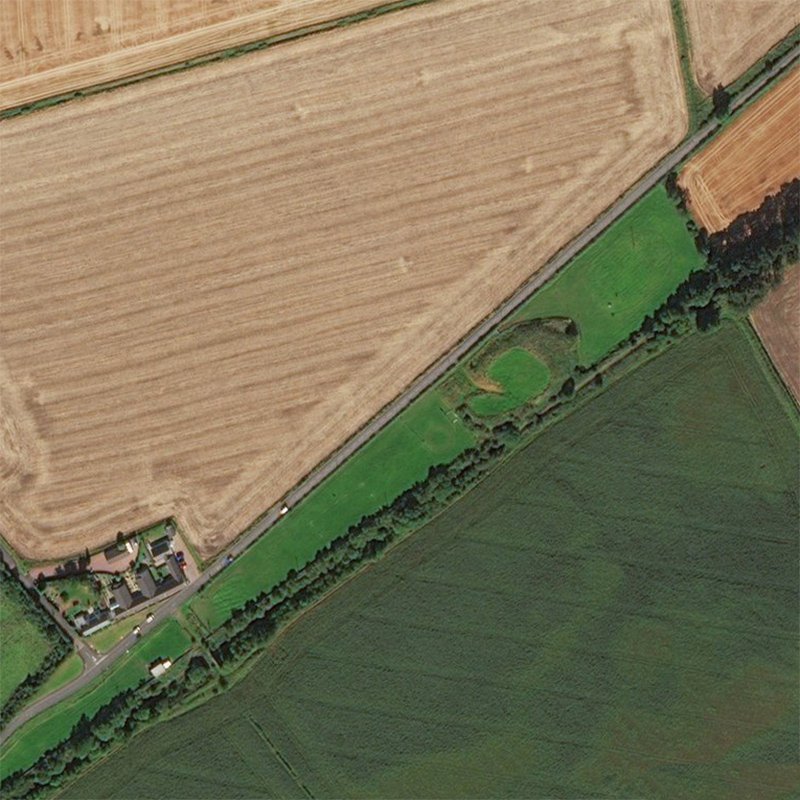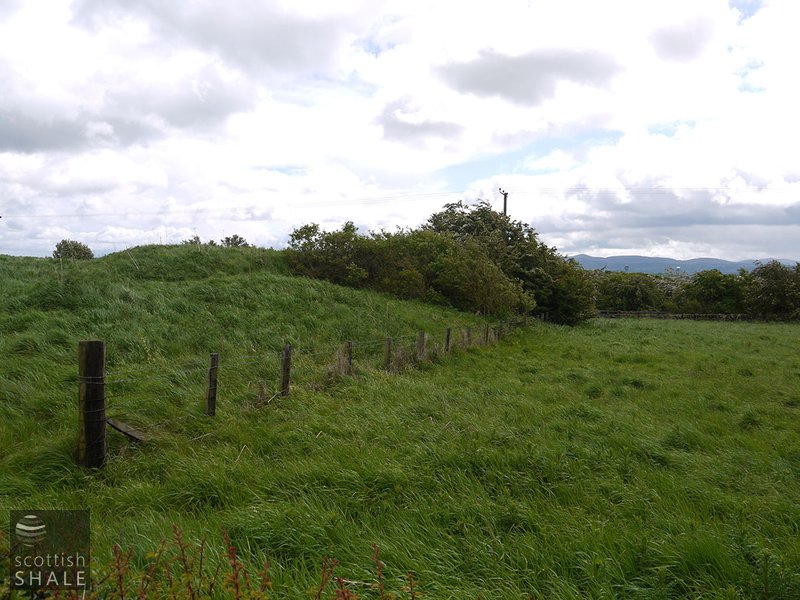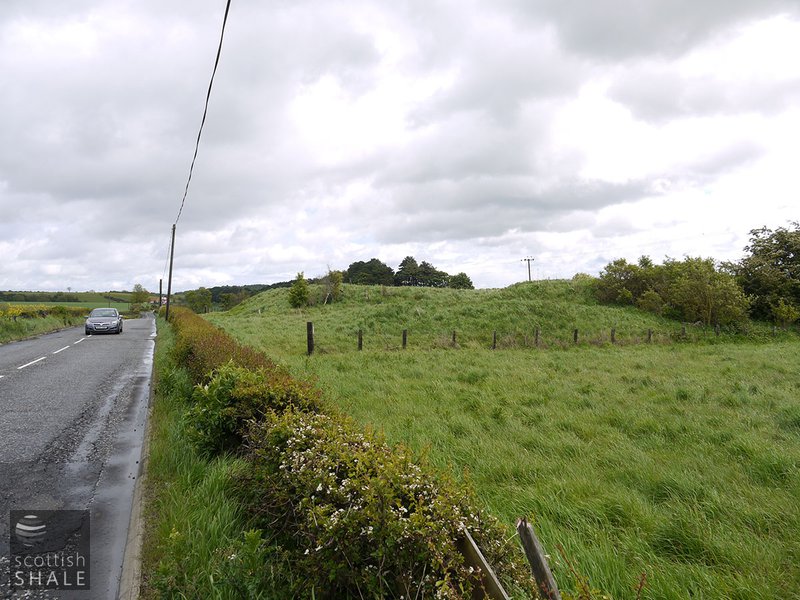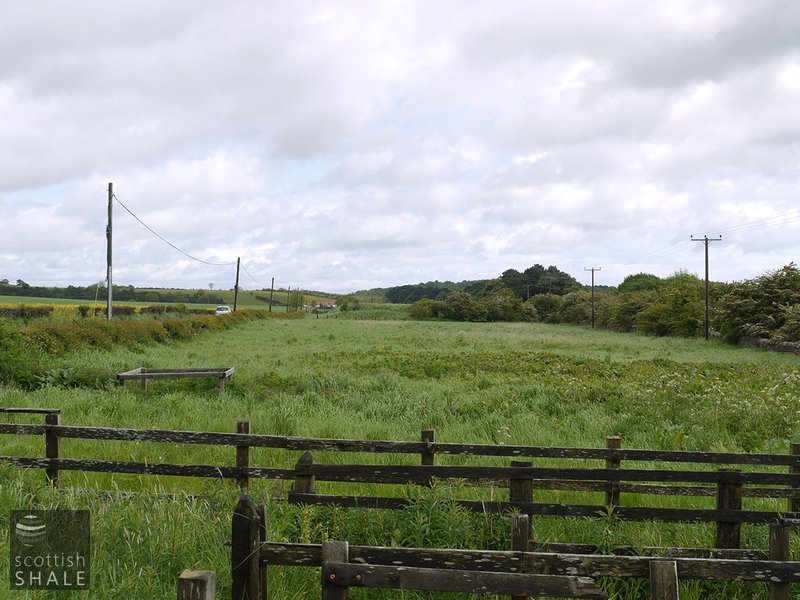- Aberdeen Oil Works
- Addiewell Oil Works
- Almondhill Oil Works
- Annick Lodge Oil Works
- Arden Oil Works
- Armadale Oil Works
- Auchenheath Oil Works
- Avonhead Oil Works
- Balgray Oil Works
- Ballat Oil Works
- Bathgate Oil Works
- Bathville Oil Works
- Bellsdyke Oil Works
- Bellsquarry Oil Works
- Benhar Oil Works
- Binnend Oil Works
- Birkenshaw Oil Works
- Bishop Street Oil Works
- Blackburn Oil Works
- Blackstone Oil Works
- Blackstoun Oil Works
- Blochairn Oil Works
- Boghall Oil Works
- Bredisholm Oil Works
- Breich Oil Works
- British Asphalte Oil Works
- Broxburn Oil Works
- Broxburn - Bell's Stewartfield Oil Works
- Broxburn - Albyn Oil Works
- Broxburn - East Mains Oil Works
- Broxburn - Greendykes Oil Works
- Broxburn - Hallfarm Oil Works
- Broxburn - Hutchinson's Oil Works
- Broxburn - Poynter's Oil Works
- Broxburn - Steele's Oil Works
- Broxburn - Steele's Stewartfield Oil Works
- Buckside Oil Works
- Burngrange Oil Works
- Calderbank Oil Works
- Canalbank Oil Works
- Champfleurie Oil Works
- Clippens Oil Works
- Cobbinshaw North Oil Works
- Cobbinshaw South Oil Works
- Coneypark Oil Works
- Craigie Oil Works
- Crown Point Oil Works
- Dalmeny Oil Works
- Deans Oil Works
- Doura Oil Works
- Drumbow Oil Works
- Drumcross Oil Works
- Drumgray Oil Works
- Dryflat Oil Works
- East Fulton Oil Works
- East Hermand Oil Works
- Eldin Oil Works
- Falkirk Oil Works
- Fergushill Oil Works
- Forthbank Oil Works
- Forth & Clyde Oil Works
- Gavieside Oil Works
- Grange Oil Works
- Grangepans Oil Works
- Greengairs Oil Works
- Hareshaw Oil Works
- Hartwood Oil Works
- Hawick Oil Works
- Hermand Oil Works (1866)
- Hermand Oil Works (1883)
- Holmes Oil Works
- Hopetoun Oil Works
- Hurlford Oil Works
- Inkerman Oil Works
- Inverkeithing Oil Works
- Kilrenny Oil Works
- Kilwinning Oil Works
- Kirkmuirhill Oil Works
- Kirkwood Oil Works
- Lanark Oil Works
- Lanemark Oil Works
- Levenseat Oil Works
- Limerigg Oil Works
- Linwood Oil Works
- Loanhead Oil Works
- Lochburn Road Oil Works
- Lochgelly Oil Works
- Longrigg Oil Works
- Magdalene Oil Works
- Methil Oil Works
- Millburn Oil Works
- Nettlehole Oil Works
- Niddry Castle Oil Works
- Nitshill Oil Works
- Oakbank Oil Works
- Palacecraig Oil Works
- Pathhead Oil Works
- Patterton Oil Works
- Pentland Oil Works
- Philpstoun Oil Works
- Port Dundas Oil Works
- Possil Oil Works
- Pumpherston Oil Works
- Raebog Oil Works
- Riggend Oil Works
- Rochsoles Oil Works
- Rochsolloch Oil Works
- Roman Camp - Almondfield Oil Works
- Roman Camp - Cawburn Oil Works
- Roman Camp Oil Works (1892)
- Roman Camp - Shale Oil Works
- Rosebank Oil Works
- Roughcraig Oil Works
- Rumford Street Oil Works
- Seafield Oil Works
- Shawsburn Oil Works
- Sheepford Locks Oil Works
- Shettleston Oil Works
- Shotts Oil Works
- Stand Oil Works
- Stanrigg Oil Works
- Stonehouse Oil Works
- Straiton Oil Works
- St. Rollox Works
- Swinehill Oil Works
- Tarbrax Oil Works
- Uphall Oil Works
- Uphall - Railway Oil Works
- Uphall - Wyllie's Oil Works
- Vulcan Chemical Works
- Wardend Oil Works
- Wattston Oil Works
- Westfield & Capeldrae Oil Works
- Westwood Oil Works (1941)
- Westwood Oil Works (1866)
- Whitebog Oil Works
- Whitehill Oil Works (Lanarkshire)
- Whitehill Oil Works (Midlothian)
- Whiterigg Oil Works
- Woodhall Oil Works
Almondhill Oil Works
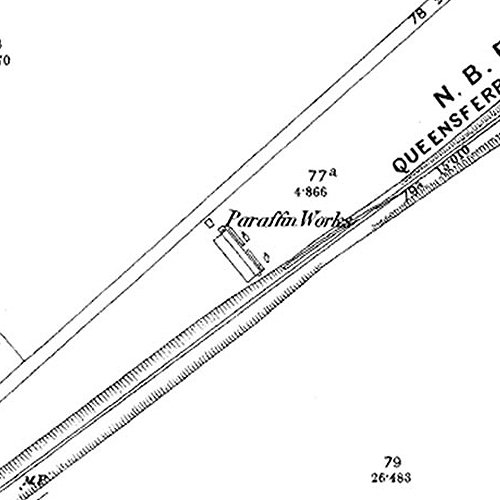
Redwood lists the site as "Carlowrie Oilworks" near Kirkliston and notes (probably erroneously) that it operated between 1863 and 1878.
During 1865 and 1866, construction of the Queensferry branch of the North British Railway, revealed several seams of oil shale on the Dundas estate. The potential value of the shale were recognised by Dundas of Dundas, whose son, George Dundas, was then Governor of New Brunswick, Canada, where Albertite, an oil rich mineral, had been mined since the 1850's. Bores were sunk throughout the estate to assess the extent of shale reserves, and a detailed lease drawn up, based on likely cost of production and oil yield of the shales.
A group of Glasgow businessmen formed the Dundas Shale Oil Co. to lease the shale field and build an oilworks beside the Queensferry branch near Almondhill cottages. Oilshale seems to have been quarried in opencast workings within the estate. Oil production does not seem to have lived up to the high expections, and for a period the company produced composition bricks, presumably from blaes quarried along with the oilshale.
Partners of the Dundas Shale Oil Co. were associated with the Kirkliston Oil Co. which perhaps planned to open an oilworks at Dalmeny, but failed in 1870.
The location of the Almondhill oil works is marked as Paraffine Works on the 1870 OS map. This site, and an adjacent waste heap, survive as an areas of rough grazing.
| Date | Rateable Value | Owner | Occupier | Notes |
| 1868 | £45 | Dundas Shale Oil Company | Dundas Shale Oil Company | Works |
| £45 | George Dundas of Dundas | Dundas Shale Oil Company | Minerals | |
| 1869 | £75 | Dundas Shale Oil Company | Dundas Shale Oil Company | Works |
| £600 | George Dundas of Dundas | Dundas Shale Oil Company | Minerals |
Recent images
NORTH BRITISH RAILWAY. OPENING THE BRANCH BETWEEN RATHO AND DALMENY.
The portion of the Queensferry Branch of the North British Railway just completed between Ratho and Dalmeny—a distance of about four miles—was opened yesterday with a very promising amount of traffic. The construction of the line itself has been the occasion of a discovery which may turn out greatly to its advantage. In one of the cuttings on Lord Rosebery’s property the navvies came upon a seam of shale, to which attention was attracted the readiness with which it burned in the fires lighted by the workmen. Mr Dundas of Dundas, whose property adjoins, having been made aware of the circumstance, got his estate “bored,” and the result was that shale was found in the greater part of it. The quality of the shale excellent, and it is said that works will be erected for the production of the oil by distillation in the usual manner. We yesterday saw seam of the shale, about four feet thick, in a cutting at Dalmeny. The place where the shale has been found on the line is about twelve miles from Bathgate and about six from Broxburn.
Edinburgh Evening Courant, 2nd March 1866
.......
THE DISCOVERY OF SHALE ON THE DUNDAS ESTATE
LEASE OF SHALEFIELDS .
We mentioned incidentally the other day that a seam of shale had been found in one of the cuttings on the Dalmeny branch of the North British Railway, and that on the estate of Dundas, in the neighbourhood, the mineral had afterwards been found in considerable quantities. We learn that a portion of the estate, lying to the north-east of Dundas Castle, has been let for the excavation of the shale, but the greater part of the property has not yet been bored. The seam opened at Dalmeny is due east from Dundas Castle, and it is expected that the best quality of the shale will be obtained both to the east and south- east—namely, on the farms of Milton and Almondhill. Specimens of the mineral from Newbigging, on the north side of the Castle, were found Dr Penny to yield about one-half the quantity that Boghead coal usually produces. The change that has taken place of late in the value of this material is remarkable. As an instance, we may mention that in a district in West Lothian a proprietor was accustomed for many years to remove the shale, which he looked upon refuse, to out of the way part of his property; but now finds, to his delight, no doubt, that he had unwittingly been accumulating source of wealth.
The extreme west corner of the Dundas estate has been bored in various places to the depth of eight, ten, and sixteen fathoms. In the sixteen fathoms’ bore there were found upwards of twenty-five feet of different kinds of shale, in the bore of ten fathoms about thirty-three feet, and so on. From the energy of Mr Dundas, the proprietor, the resources of the estate will doubtless be developed in a most successful manner, and will, we hope, prove as remunerative as has been the case in other districts.
From the extraordinary appearance of the minerals in the Dalmeny cutting, it has been supposed by some that there is a probability of lead being found in the vicinity, probably in Dundas Hill. That there is abundance of limestone on the estate is well known; and the superior character of the fire-clays passed through in the bores would justify an enterprising person in establishing a large work for the manufacture of fire-bricks, chimney-cans, &c. There are also indications of cement stones, and some seams of thin ironstone. The proximity of the mineral field to the large harbour presently being constructed by the railway company a little to the west of Queensferry, will always secure a ready sale for the products. The nature of the leases to be given in the letting of land with shale is attracting much attention, and is a matter of great importance both to landlords and tenants.
Considerable difficulty has been felt in West Lothian in arriving at decision as to what would fair and proper terms on which leases of shale ground should be granted. This difficulty has arisen from the fact of the great demand for shale, the arrangements projected for its manufacture being on so large a scale, and the whole trade being of so recent origin. It is necessary that the terms of the leases should be such as to induce capitalists to engage in the trade, and also to enable them to bear up against its fluctuations, while, at the same time, the proprietor must afforded a fair return for the material let out him. It has been ascertained that the average cost of raising and manufacturing a ton of shale into oil will not amount to 10s. As the character and quality of the mineral increases, the comparative expense of the manufacture decreases, and where it can be worked open cast the cost will be much less.
The following facts ought to kept in view in dealing with this matter in reference to an estate which may be likely to contain one of these thick shales. The expense of tirring for open cast workings depends, course, upon the thickness and description of surface, and the distance to which the material must be conveyed. The expense may be roughly estimated at 6d. per cubic yard. Although the tirring should become excessive, still since most the shales in the estate may be workable by dook, the cost of drawing will not be great, while the cost of hewing will not exceed 1s. per ton. Take, for instance, Mr. Dougall’s bore on the Dundas estate, as an average section of a lot of 20 acres, and calculate the expense per acre of raising the shales in it. It contains 8 feet of surface and broken metals, of which, perhaps, little use can be made and 9 feet of limestone and blase. There then occurs the following workable section- Curly shale, 2 feet 1 inch; blase and cement, 1 foot 6 inches; slaty shale. 2 feet 8 inches ; black blase, 4 feet; slaty shale, 12 feet 11 inches. The lifting and removal of the surface, the quarrying out of the shale, the damage done land, men's wages transporting and distilling at 1s.per ton. allowing 27,426 tons per acre, interest, &c., would amount to a total cost about £4972 per acre, giving an average expense of 3s 8d. per ton. If the above quantity of tons of shale produced 80 gallons of crude oil per ton, worth 1s. per gallon, the produce would be £46,189; and after deducting the expense, the nett profit per acre would amount to about £36,166. If the produce were 40 gallons per ton, the expense would not be much if all increased, while the profit per acre would be increased to the sum of £49.879, 10s. In like manner, if the shale yielded 50 gallons per ton, the profit per acre would be increased to £68,692. In this view, the tenants’ profit per ton would be follows : —On 30 gallon shale, £l, 6s. 4d.; on 40 gallon shale, £l, 16s. 4d.; on 50 gallon shale, £2, 6s. 4d.
These remarks with reference to the nature of leases are the substance of suggestions made by gentlemen well acquainted with the trade, for the guidance of those who may be fortunate enough to have shale on their properties. In the course of making inquiries on this subject the other day, we learn that Mr Dundas has just received from his son, Mr George Dundas, Governor of Prince Edward's Island, specimen of a rich oil-producing mineral found in large quantities Albert County, New Brunswick. It resembles jet, and has bright sparkling fracture. It yields large quantities of oil and other products, and readily lights the flame of a candle. The material is called Albertine. ...Not the least interesting sight at Dundas is the “Paragon " Engineering Works of Mr Dundas. We doubt much if such a scene of activity is to witnessed in so close proximity to any other castle in Scotland. The works are of considerable extent, and a large number of workmen are employed. Mr Dundas is a most enthusiastic engineer—a self-taught one, too, may state—and personally superintends everything himself. One peculiarity of this establishment is that all the tools used, from the most elaborate planing machines to the simplest instrument, have been manufactured by Mr Dundas; and the excellence of his tools has gained for him widespread fame. On our visit to the works observed a great deal of valuable machinery about to be despatched to Australia, India, and other parts of the world.
Edinburgh Courant, 12th April 1866
.......
"STRUCK 'ILE."
The oil wealth of Pennsylvania stands a fair chance of being rivalled the shale deposits of Scotland. Day day new seams are being discovered, and immense works being erected for working the same. As the latest on the subject, we learn that a portion of the estate lying to the north-east of Dundas Castle, has been let for the excavation of the shale, but the greater part the property has not yet been bored. The seam opened Dalmeny is due east from Dundas Castle, and it is expected that the best quality of the shale will be obtained both to the east and south-east —namely, on the farms of Milton and Almondhill. Specimens of the mineral from on the north side the Castle, were found by Dr Penny to yield about one-half the quantity that Boghead coal usually produces. The change that has taken place of late to the value of this material is remarkable. For instance, we may mention that in a district in West Lothian a proprietor was accustomed for many years to remove the shale, which he looked upon as refuse, to an out of the way part of his property; but he now finds, to his delight, no doubt, that he had been unwittingly accumulating a source of wealth. The extreme west corner the Dundas estate has been bored in various places to the depth of eight, ten, and sixteen fathoms, In the sixteen fathoms bore there was found upwards of twenty-five feet of different kinds of shale, in a bore of ten fathoms about thirty-three feet, and so on.
Falkirk Herald, 19th April 1866
.......
KIRKLISTON - Discovery of Shale on Estate.
Some time ago search for shale was made the estate of Dundas, which at first did not give much promise of success. Boring, however, was continued on different parts of the estate, which eventually resulted in the discovery of seam of shale, upwards of three feet in thickness, a depth of about 12 feet from the surface, and dipping considerably in an easterly direction. This seam, it is believed, extends over large portion of the eastern district of the estate. It is said to yield gallons per ton, and of excellent quality. This new field has been let to Captain Pattison, Ayrshire, who has already commenced operations, and intends, we believe, to erect works for manufacturing the shale, on the side of the new railway, a short distance from the village.
Dunfermline Saturday Press, 27th October 1866
.......
BRICKS (Composition) for sale at Kirkliston. – The Dundas Shale and Oil Company can now give a Regular Supply of First-Class Composition Bricks. Apply to the Manager, at the Works.
Scotsman, 19th December 1868
.......
Since 1864 several works have been erected, of which we may mention the Dundas Shale Oil Company, on the estate of Mr. Dundas of Dundas at Kirkliston...which manufacture the crude oil only.
Scotsman, 8th February 1869
.......
Iron (old). Some tons available at Kirkliston Oil Works, Kirkliston.
Scotsman, 9th October 1969





